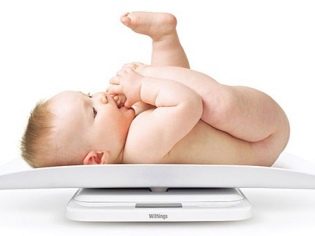When does a child start to roll over from back to side independently and what does it depend on?
Parents of infants with trepidation expect new skills to appear in their children. As soon as he learns to keep the head, experienced parents begin to prepare for a new stage of development of their baby - for upheavals. When a child begins to roll from back to side and what to do if he stubbornly does not want to make such movements, we will tell in this article.
A few words about the regulations
Young parents have a lot of questions. In search of answers to them, they turn to pediatricians and the Internet. It is not surprising that the responses received upset moms and dads and make them worry about the development of their babies. The fact is that there are no rules for a coup from the belly to the side or from the back to the side. A competent and experienced children's doctor will answer that the baby will perform the desired action when he is ready for it.
Nevertheless, someone has invented and actively disseminates standards that are suitable for reference use and can never be applied to a particular child under any circumstances. They say that babies should easily turn on their side from the back in about 4-5 months.
If your child has not mastered such movements in his 4-5 months, this cannot be considered a deviation and hesitate to treat a perfectly healthy child, not sparing the strength and resources. Just his time has not come yet and you need to wait a bit. It is this kind of parental behavior that all eminent pediatricians - Roshal, consider correct. Komarovsky, Spock.
In practice, parents who have been reading women’s forums and are upset that others have “children turn over almost from 3 months,” often act incorrectly - they begin to actively help the child, harass him with a massage, carry an appointment to a neurologist and require them to prescribe medications .
Inappropriate actions during the massage and attempts to “develop” the child with the help of jumpers are the main danger for the child, doctors say. An early vertical load experienced by an infant, which is suspended in jumpers, can lead to serious problems with the spine and legs, with hip and knee joints.
Only one strong fact can stop parents: the child will not begin to roll over before his support system and muscles will be ready to perform such actions. Neither massage nor other parental response measures will help speed up this process.
Impact factors
So why do some children begin to roll over earlier, while others are not in a hurry to roll to the side, even reaching the age specified in the average standards? The answer to this question is quite difficult to give.
There are many factors that affect the speed of physical development of the baby. Coups, in particular, depend on how much the lateral muscles, muscles of the back and abdomen can cope with the task set by nature. As soon as they are ready, the child will turn over on its own, without outside help, to the great joy of all the household. There are various reasons for the slowdown in physical development.
- Overweight baby. Large-born children who, moreover, do not complain of lack of appetite, may well weigh more than they need, and this is precisely what causes the child’s reluctance to turn over somewhere.
- Prematurity If the baby was born earlier than the period prescribed by obstetricians, he has weaker muscles and ligaments. In order to get stronger, these kids need more time than their peers, who were born on time.
- Genetic predisposition. If mom and dad developed slowly in childhood, slowly, then it’s not worth waiting for the child to start ahead of the norm.
- Character traits. There are children who are mobile and restless since birth, but there are lazy “sony” who, because of their temperament, are not in a hurry to go to explore the world, while they are completely satisfied with sleep and food.
- The presence of birth injuries and diseases. Children who received trauma during birth or have congenital diseases learn motor skills later, although it all depends on the specific disease - the child may not turn over at all for cerebral palsy, and at ischemia and hypertonus he will master the skills of coups, but later than his peers.
What to do?
First you need to calm down and sensibly assess the situation. A pediatrician and a neurologist at the first medical examination have already observed your child, and if he had birth injuries, they would have already been revealed. If the child has a diagnosis, it is necessary to act in strict accordance with the recommendations of the doctor. If diagnoses are not established, do not look for problems where they are most likely not. Just wait a few more weeks. Give your child time to master the new movements on their own.
If the parents have only one complaint - the absence of side-turning and the child has no other developmental deviations, unrest is completely unnecessary.
It only makes sense to visit the doctor when, besides the absence of coups in the child, poor appetite, frequent and copious regurgitation, shallow and short sleep, if during waking periods he almost constantly cries, does not react with a smile at his mother, does not become animated at the sight of parents or bright rattles.
A child in 4-5 months should be able to handle certain objects in handles, an alarming sign is the lack of such skills. If the child perfectly grabs his fingers, tries to pull himself up, is interested in toys and his mother, searches for sources of sounds with his eyes, then his inability to roll onto his side cannot be considered pathology.
Teaching a child to roll over on its side is almost impossible. But parents can help him get stronger faster. To do this, with the permission of the pediatrician, you can do a light massage, do gymnastics with the baby, walk more in the fresh air and feed properly.
Massage
You can visit a massage therapist in the clinic, but it is better to master a simple and completely inexpensive massage on your own, especially since tactile contact with the mother is very important for the baby, and no uncle with a diploma can give the child a feeling of comfort and pleasure if you do a massage in the clinic.
There is nothing difficult in the fortifying classic massage. With warm hands and with the obligatory use of massage oil or baby cream, the mother first makes light stroking of the breast, abdomen and extremities of the child in the direction from top to bottom. Then there is a more intense rubbing of the breast, a circular massage with the palm of the abdomen, and all is completed with light vibrating tapping with the tips of the fingers on the skin.
After this, the child is turned over on the stomach and the same is repeated, but with the back, paying special attention to the back muscles, oblique lateral muscles. Pressure and vertebra massage should be avoided. Mom builds all movements around the spinal column.
If the child begins to cry during the massage, loosen the pressure of the hands, if this does not help, stop the session and return to the massage later, when the child is in a good mood.
Accompany the massage with songs and rhymes, funny sounds, so that the baby regards it as a fun and exciting game.
Exercises
To strengthen the lateral muscles, which are responsible mainly for the ability to rotate the body, use the typical children's curiosity. During an air bath, for example, after a massage, put a new bright toy to the right or left of the child. If the baby is lying on its back, hold its legs with your own hands. Then, in order to turn around and look at an interesting object, the baby will have to slightly strain the lateral and neck muscles.
After the baby is able to examine the toy to its right, move it and position it on the left side so that the lateral muscles on the right and left develop symmetrically.
Similarly, stimulate the lateral muscles of the child from the prone position on the stomach. Remember: without a good motivation, the child will not want to toss and turn to anywhere. Interest him.
As part of everyday gymnastics, use the well-known exercises to bring the legs to the stomach, to alternate them ("Bicycle"). Stimulate turns, letting the leg down and helping the child roll to the side. Leave the child more often in the prone position, having mastered the coup from side to back. He is pretty quick to understand that you can roll over and in reverse order.
Do not exercise and do not massage, if the baby is sick, if he has a fever, teething or just a bad mood.
Useful tips
Parents are important to know the following.
- Treat massage and gymnastics not as a treatment, but as a daily ration aimed at developing and strengthening the baby as a whole. The kids are very sensitive to the mood of the adults, and if the mother dramatizes everything, then the crumb will not be adequate to the developmental activities - they will cause him tears and discontent.
- Do not compare your child with other children. He has his own path of development, and there is no need to create standards for him. Take and love the baby as he is.
- As soon as the child shows the first attempts to roll over on its side, remember that the position on its side is the most unstable, watch it carefully so that the child does not fall down, having rolled from the changing table or sofa.
- Well helps to strengthen the muscles of swimming, which you can practice at any age. If you cannot teach your baby to swim independently, contact any pool or water sports palace where there are special groups for crumbs.
- Remember that a child, having mastered coups from back to side, may begin to sleep worse. He will change his body position in his sleep and at first he will be afraid of it, wake up and cry. Take care that two soft, small rollers from rolled up diapers interfere with spontaneous coups.
To learn how to teach a child to roll over, see below.























